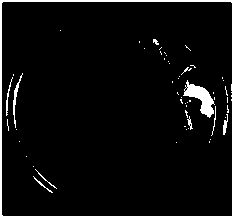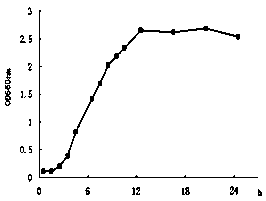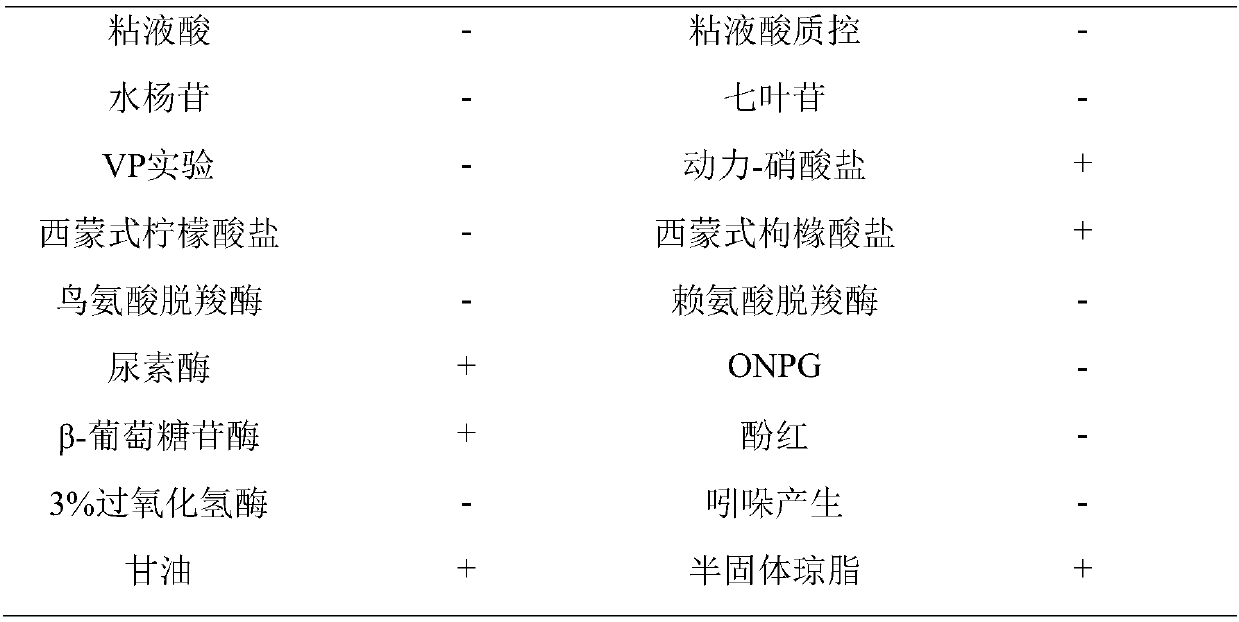Salt-tolerant Bacillus lentus GBW-HB1902 and application thereof
A GBW-HB1902, Bacillus lentus technology, applied in the field of microorganisms, to achieve broad application prospects, improve biological treatment effects, and solve the effects of poor microbial biochemistry
- Summary
- Abstract
- Description
- Claims
- Application Information
AI Technical Summary
Problems solved by technology
Method used
Image
Examples
Embodiment 1
[0033] Example 1: Screening, isolation and identification of Bacillus lentus GBW-HB1902
[0034] 1. Screening and purification of Bacillus lentus GBW-HB1902
[0035]Take 2g each of landfill leachate, seawater, and saline-alkali soil samples, add them to 50mL of PBS buffer solution, shake for 5min to mix the samples thoroughly, centrifuge at 1000rpm for 5min, collect the sample supernatant, and set aside. Take 10mL of the supernatant of the above samples and add them to Erlenmeyer flasks containing 200mL of high-salinity ammonium nitrogen degrading bacteria enrichment and screening liquid medium, culture at 28°C, 150rpm constant temperature shaker for 3 days, and enrich for 3 times. After gradient dilution of the cultured bacterial suspension, 100 μL was spread on the high-salinity ammonium nitrogen degrading bacteria enrichment and screening solid medium, and placed in a 28°C incubator for cultivation. After 48 hours, single colonies of different shapes were picked and streak...
Embodiment 2
[0040] Example 2: Growth assay and physiological and biochemical characteristics of Bacillus lentus GBW-HB1902
[0041] 1. Growth determination of Bacillus lentus GBW-HB1902
[0042] Inoculate the Bacillus lentus GBW-HB1902 cultured on the slant into the improved NB medium, and culture it on a constant temperature shaker at pH 7.2-7.5 and 28-32°C for 24 hours to prepare the GBW-HB1902 bacterial liquid, which is sampled every 1.0 hours. The absorbance value was measured at OD600nm, and the growth curve was drawn. Such as figure 2 As shown, the experimental results show that GBW-HB1902 is in the growth retardation phase in the first 3 hours of culture, and then enters the logarithmic growth phase, and enters the logarithmic growth phase after 12-14 hours of culture, and the number of bacteria reaches 3×10 10 cfu / mL, 14-20h is the stable growth period, and then enters the decline period, thus completing the entire growth cycle.
[0043] 2. Physiological and biochemical charac...
Embodiment 3
[0048] Embodiment 3: the salinity tolerance test of Bacillus lentus GBW-HB1902
[0049] In order to test the survival performance of Bacillus lentus GBW-HB1902 under high salinity conditions, its tolerance in different salinity was tested. Prepare the NB medium with different salt concentrations using sodium chloride, then inoculate the Bacillus lentus GBW-HB1902 cultured on the slant into the NB medium with different salt concentrations, and cultivate it in a constant temperature shaker at pH 7.2-7.5 at 28-32°C After 18 hours, the bacterial liquid of Bacillus lentus GBW-HB1902 was obtained, and the growth status of the bacteria in media with different salt concentrations was detected. The results are shown in Table 2. GBW-HB1902 has eurosalinity and can grow well in the salinity range of 20-40‰.
[0050] Table 2 Growth of Bacillus lentus GBW-HB1902 in different salt concentrations
[0051]
PUM
| Property | Measurement | Unit |
|---|---|---|
| Diameter | aaaaa | aaaaa |
Abstract
Description
Claims
Application Information
 Login to View More
Login to View More - R&D
- Intellectual Property
- Life Sciences
- Materials
- Tech Scout
- Unparalleled Data Quality
- Higher Quality Content
- 60% Fewer Hallucinations
Browse by: Latest US Patents, China's latest patents, Technical Efficacy Thesaurus, Application Domain, Technology Topic, Popular Technical Reports.
© 2025 PatSnap. All rights reserved.Legal|Privacy policy|Modern Slavery Act Transparency Statement|Sitemap|About US| Contact US: help@patsnap.com



